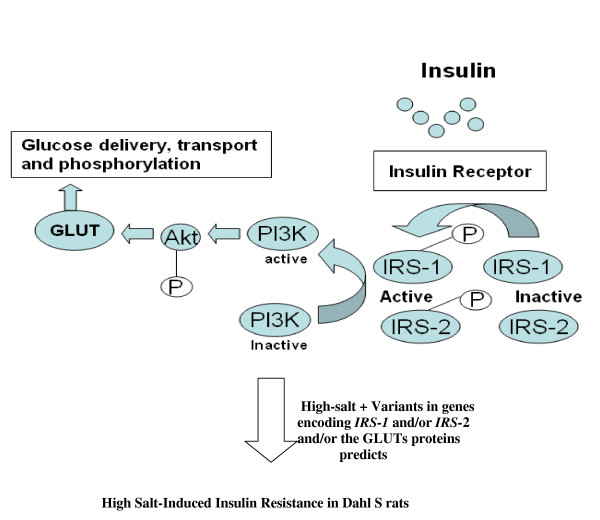Figure 2.
Illustration of the Insulin Pathway and its Potential Contribution to High Salt-Induced Insulin Resistance in Dahl S rats. When insulin activates the insulin receptor in vivo, tyrosine phosphorylation of the IRS-1 and IRS-2 activates phosphoinositide 3 kinase (PI3K) enzyme, whose activation in turn stimulates the serine phosphorylation of Akt (Protein kinase B) [108]. The latter enzyme (PKB) stimulates glucose transport in muscle and adipose tissue through the stimulated translocation of glucose transporter GLUT4 isoform [109]. PKB also stimulates glycogen synthesis in the liver and muscle, and stimulates lipogenesis in adipose tissue. Existence of variants in genes encoding IRS-1 and/or-2 and glucose transporter proteins might impair insulin signaling by suppressing the IRS-1 and/or -2 mRNA levels, protein levels and activity or enhancing serine phosphorylation of IRS-1 and -2 resulting in high salt-induced insulin resistance in Dahl S rats.

